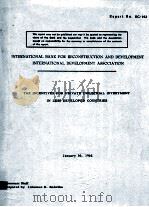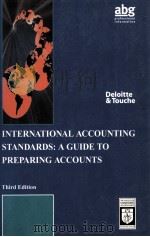《DEVISING INTERNATIONAL BANK SUPERVSORY STANDARDS》
| 作者 | JOSEPH JUDE NORTON 编者 |
|---|---|
| 出版 | GRAHAM & TROTMAN/MARTINUS NIJHOFF |
| 参考页数 | 339 |
| 出版时间 | 1995(求助前请核对) 目录预览 |
| ISBN号 | 1859661858 — 求助条款 |
| PDF编号 | 813681378(仅供预览,未存储实际文件) |
| 求助格式 | 扫描PDF(若分多册发行,每次仅能受理1册) |
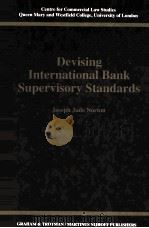
Chapter One: UNDERSTANDING THE DIMENSIONS OF THE “CODE WORD”1
Ⅰ.THE “CODE WORD”3
A.The Concept Itself3
1. Economic Meaning3
2. Financial Accounting Meaning4
3. Investment Banking Meaning5
4. Business Management Meaning5
5. Legal Meaning5
6. Rating Agency Significance7
7. Bank Regulatory Meaning7
B.Composition8
1. Preferred Stock8
2. Debt Instruments9
3. Financial Reserves10
C.Measurement12
D.Institutional Applicability15
E.Significance of the Dilemmas17
Ⅱ.THE LEGITIMACY OF BANK CAPITAL ADEQUACY STANDARDS20
A.Derived Policy Underpinnings21
1. The General Context21
2. Domestic Considerations23
B.International Considerations31
1. Safety and Soundness31
2. Competitive Equality and Transparency33
Ⅲ.THE LINKAGE TO LEGAL REGULATION36
Ⅳ.CONCLUDING OBSERVATIONS38
Chapter Two:THE NATIONAL CONTEXT: THE EVOLUTIONARY TRANSFORMATION OF CAPITAL ADEQUACY FROM DOMESTIC EXAMINATION TO DOMESTIC REGULATORY OBJECTIVE IN THE US AND UK AND THEN TO INTERNATIONAL REGULATORY OBJECTIVE43
Ⅰ.INTRODUCTION45
Ⅱ.THE UNITED STATES EXPERIENCE46
A.The Pre-1980 Era46
B.The Post-1980 Era52
1. The 1981 Statements52
2. Major 1983 Events55
3. The ILSA Regulatory Implementation and the1985 Regulations58
4. 1986 Events67
Ⅲ.THE UNITED KINGDOM EXPERIENCE69
A.The Pre-1970 Era70
B.The 1970s73
1. Secondary Banking Crises73
2. The European Community Entry77
3. The Banking Act 197978
C.The 1980s80
1. The 1980 Capital Adequacy Standards81
2. Subsequent Refinements to Measurements86
3. Other Prudential Developments87
4. The Banking Act 198788
Ⅳ.THE INTERCONNECTION OF EXPERIENCES: THE INTERNATIONAL ARENA92
A.Internationalization of Approaches92
B.A Specific Bilateral Interconnection93
Ⅴ.THE BROADER IMPLICATIONS94
Chapter Three:A REGIONAL CONTEXT: THE EUROPEAN COMMUNITY BANKING LAW PARADIGM - AN EPICENTRE FOR THE DEVELOPMENT OF TERNATIONAL STANDARDS ON BANK PRUDENTIAL SUPERVISION AND REGULATION99
Ⅰ.INTRODUCTION101
Ⅱ.THE BACKDROP: ATTAINMENT OF A COMMON INTERNAL MARKET105
A.The Historical Background106
B.The Economic Framework109
C.The Legal Implementation Dimension114
D.The Regulatory Objectives118
E.The Political End-game121
Ⅲ.SETTING THE STAGE: THE EARLIER BANKING DIRECTIVES122
A.Council Directive of 1973122
B.The First Banking Coordination Directive of 1977123
1. The branch authorization process124
2. Supervisory coordination127
3. Solvency and prudential supervision128
4. Judicial Review128
5. The 1977 EC Approach in Perspective129
C.The 1983 Directive on Consolidated Supervision (as replaced in 1992)130
D.The Accounting Linkage136
Ⅳ.THE INTRA-COMMUNITY CONVERGENCE MATRIX: THE SECOND BANKING DIRECTIVE AND THE PRUDENTIAL DIRECTIVES138
A.The Centrepiece of the Convergence Process: The Second Banking Directive138
1. Liberalization and Convergence through Self-Interests: Mutual Recognition and Single License Concept139
2. Controls Over the Single License142
3. The Branching Procedure145
4. Standardization of Certain Prudential and Regulatory Practices146
B.The Related Prudential Directive: Progeny of the Basle Process?150
1. The Various Capital Adequacy Related Directives151
2. The Large Exposures Directive159
3. The Prudential Supervision Directive160
C.Workshop for Further Intra and Inter-Industry Convergence Efforts162
Ⅴ.THE INTERNATIONAL CONVERGENCE LINKAGE163
A.Multilateral Externalities164
B.Bilateral Externalities and the “Reciprocity” Leverage167
Ⅵ.CONCLUDING OBSERVATIONS168
Chapter Four:THE INTERNATIONAL CONTEXT: THE BASLE COMMITTEE ON BANK SUPERVISION171
Ⅰ.INTRODUCTION173
Ⅱ.BASLE COMMITTEE’S INITIAL EFFORTS175
A.The Committee’s Efforts: 1975-1986175
B.An Intervening Catalyst: the U.S../U.K.Accord186
Ⅲ.THE JULY 1988 REPORT AND BEYOND190
A.The 1987 Proposal190
B.The Final Revisions192
C.A Summation of the 1988 Report193
1. The Capital Elements193
2. The Capital Deductions195
3. The Basle Risk Categories196
4. Off-Balance Sheet Treatment197
5. Minimum Capital Ratio198
D.Subsequent Interpretation, Monitoring and Amendment of the Report199
E.Post-1988 Committee Activities (including BCCI Implications)200
Ⅳ.THE 1988 REPORT AND SUBSEQUENT LAW GENERATION WITHIN THE MEMBER STATES: THE US EXAMPLE201
A.The US Adoption of the Basic Basle Framework203
1. In General203
2. Redefining Capital205
3. Risk-Weight Categories207
4. Off-Balance Sheet (“OBS”) Items211
B.Going Beyond “Basic Basle”212
1. The Additional Minimum Capital or Leverage Ratio212
2. The New Capital-Based Supervision Scheme213
3. Increased Significance of Audits and Accounting Standards217
4. The Approach to Interest Rate Risks219
5. The Basle Standards and the Treatment of Foreign Banks in the United States220
Ⅴ.THE 1988 REPORT AND ITS BROADER “INTERNATIONAL LEGAL SIGNIFICANCE”229
A.Relation to Regional Supervisory Groups229
B.Relation to IOSCO and International Securities and Insurance Activities233
C.A Regional Model for a Wider Europe234
D.A Regional Model: The Case of NAFTA235
E.An IMF/World Bank Development Model238
F.Other Embraces: The Cases of Taiwan, South Korea and South Africa239
G.An Educational and “Networking” Dimension240
H.The Relation to Accounting Organizations240
Ⅵ.CONCLUDING OBSERVATIONS241
APPENDIX242
Chapter Five:FINAL OBSERVATIONS AND A MODEST RECOMMENDATION245
Ⅰ.THE TERRAIN COVERED247
Ⅱ.PERCEIVED TRENDS IN INTERNATIONAL BANK SUPERVISION247
A.An Enhanced Framework for International Bank Supervision247
B.Effective Consolidated Supervision248
C.Qualified Home Country Supervision249
D.Greater Transparency and Disclosure250
E.Increased Role of Auditors and Converging Accountancy Standards250
F.Inevitability of Greater Legalism251
G.International Insolvency Laws251
H.Coordinated and Effective Enforcement252
I.Linking Banking and Securities Supervisory Standards252
J.Bank Supervision as an “Art”: The Inadequacy of Capital Adequacy253
K.An International Institutional Structure?254
Ⅲ.THE BASLE COMMITTEE’S 1988 CAPITAL REPORT (AND ITS RELATED PRONOUNCEMENTS) AS “INTERNATIONAL SOFT LAW”255
A.The Issue255
B.The Limiting Factors256
C.The Favouring Factors257
D.On Balance261
Ⅳ.A MODEST RECOMMENDATION FOR AN APPROPRIATE INSTITUTIONAL STRUCTURE FOR INTERNATIONAL BANK SUPERVISION263
A.The Attributes of an Appropriate Structure263
B.The Current Situation265
C.The Institutional Vehicle Alternatives269
1. International Monetary Fund (“IMF”)269
2. General Agreement on Tariffs and Trade (“GATT”)269
3. Organization for Economic Cooperation and Development (“OECD”)270
4. The Bank for International Settlements (“BIS”)270
5. A New Institution271
6. The Current Committee Revised271
D.A Summary of the Modest Recommendation272
Bibliography275
Index325
1995《DEVISING INTERNATIONAL BANK SUPERVSORY STANDARDS》由于是年代较久的资料都绝版了,几乎不可能购买到实物。如果大家为了学习确实需要,可向博主求助其电子版PDF文件(由JOSEPH JUDE NORTON 1995 GRAHAM & TROTMAN/MARTINUS NIJHOFF 出版的版本) 。对合法合规的求助,我会当即受理并将下载地址发送给你。
高度相关资料
-

- Nordy Bank
- 1964 Oxford Univ. Pr.
-
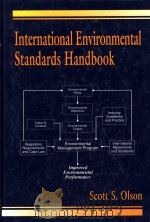
- International environmental standards handbook
- 1999 Boca Raton : Lewis Publishers
-

- THE BANK FOR INTERNATIONAL SETTLEMENTS
- 1930 MACMILLAN AND CO.
-
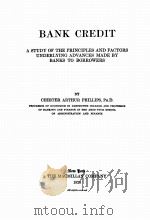
- BANK CREDIT
- 1920 THE MACMILLAN COMPANY
-

- Biological substances international standards and reference reagents 1990
- 1991 World Health Organization
-

- BANK MANAGEMENT
- 1983
-

- REGULATIONS AFFECTING INTERNATIONAL BANKING OPECTING INTERNATIONAL BANKING OPERATIONS OF BANK AND NO
- 1981
-

- BIOLOGICAL SUBSTANCES INTERNATIONAL STANDARDS AND REFERENCE REAGENTS 1986
- WORLD HEALTH ORGANIZATION
提示:百度云已更名为百度网盘(百度盘),天翼云盘、微盘下载地址……暂未提供。➥ PDF文字可复制化或转WORD


